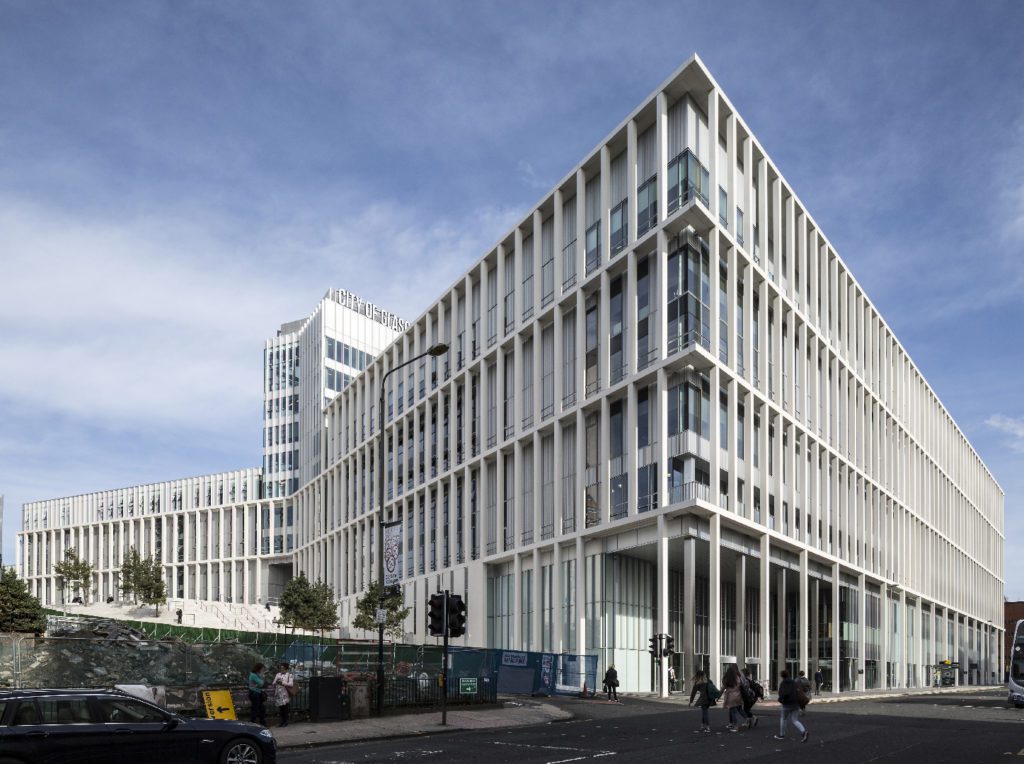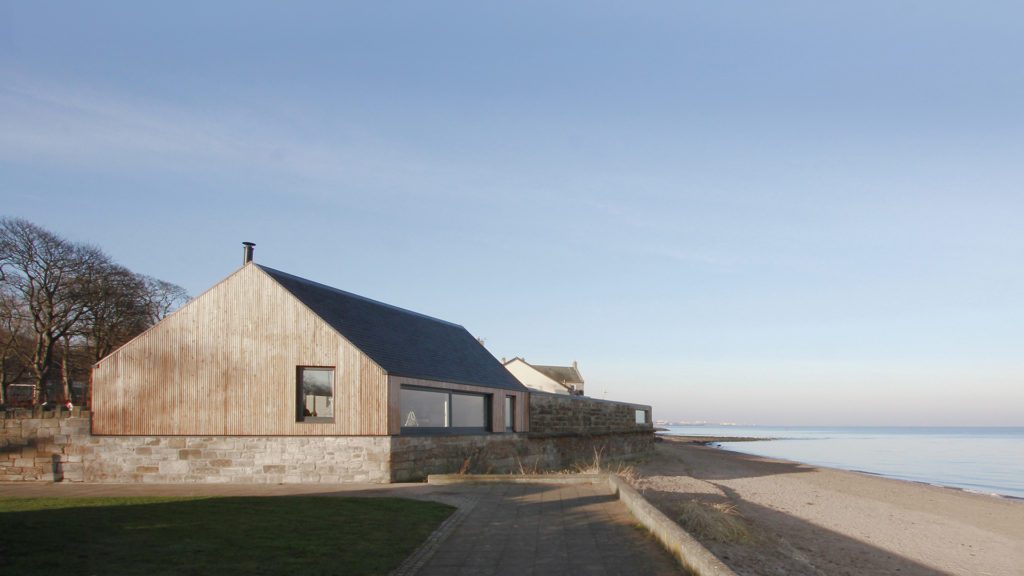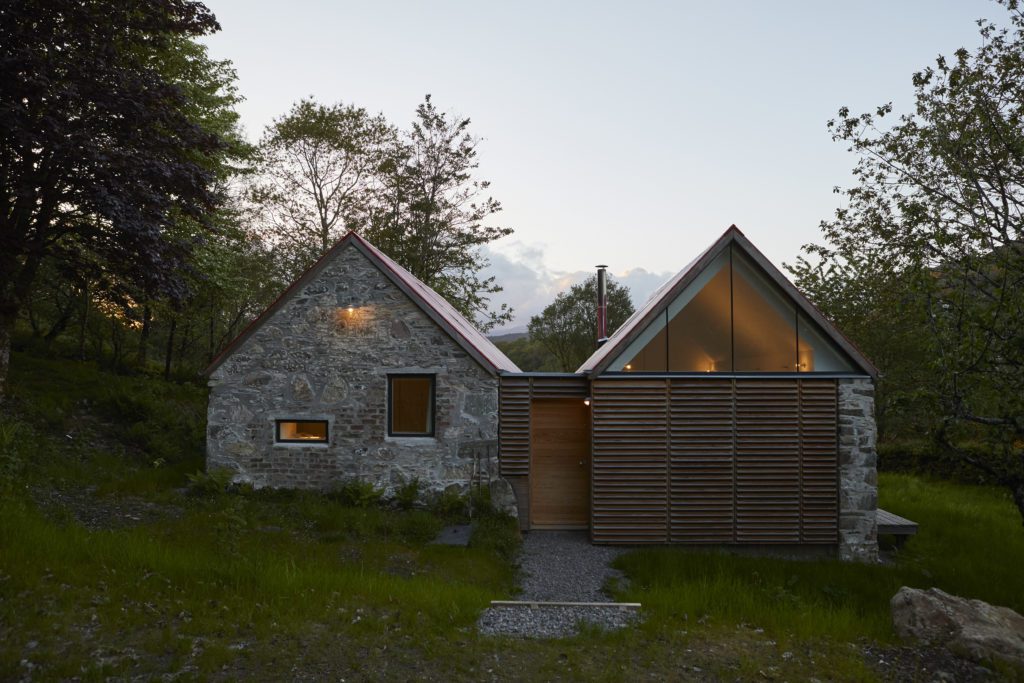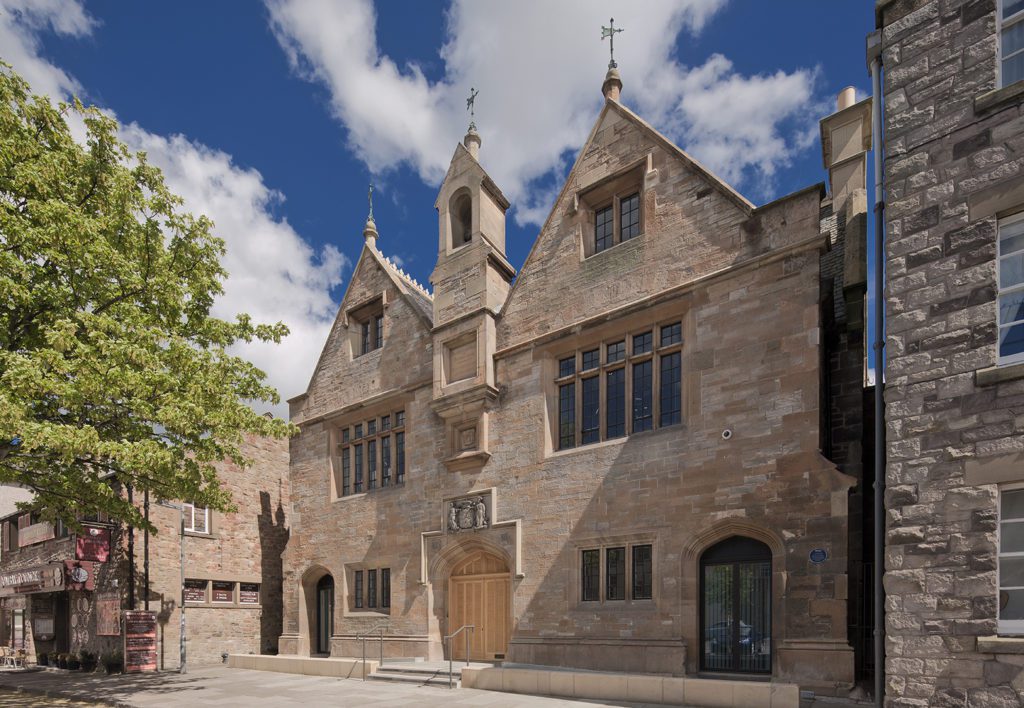The winners have been announced for the RIAS Awards 2017.
The Royal Incorporation of Architects in Scotland (RIAS) announced 12 winners at its recent Awards Dinner in Edinburgh, which were deemed to represent “the very best of current Scottish architecture”.
The judging panel consisted of Ole Wiig FRIAS, Lorraine Landels Hon FRIAS, Stuart McKnight RIAS RIBA (representing the Royal Institute of British Architects) and Karen Anderson FRIAS (Timber Award).
Stewart Henderson, president of the RIAS, commented, “The quality of contemporary Scottish architecture is well worthy of celebration. These awards demonstrate that buildings of all scales and throughout the country are exemplary in their design, execution and in what they deliver for their clients, users and communities.”
RIAS has again teamed up with Forestry Commission Scotland/Wood for Good, Historic Environment Scotland, the Scottish Government, Zero Waste Scotland and Saint-Gobain for its five sub-category awards.
RIAS Awards 2017 winners:

City of Glasgow College – City Campus, Glasgow
Reiach and Hall Architects/Michael Laird Architects

Due West, Argyll & Bute
cameronwebster architects

Dunfermline Carnegie Library & Galleries, Dunfermline
Richard Murphy Architects

Eastwood Health and Care Centre, Glasgow
Hoskins Architects

Edinburgh Road, Musselburgh
A449 LTD

Fernaig Cottage, Webster Ross
Scampton and Barnett Architects

Glendale Primary School and Bunsgoil Ghàidhlig Ghleann Dail, Glasgow
Glasgow City Council – DRS Project Management & Design

James Gillespie’s Campus, Edinburgh
jmarchitects

Moray Place, Edinburgh
Somner Macdonald Architects

Newhouse of Auchengree, North Ayrshire
Ann Nisbet Studio

Powis Place, Aberdeen
Carson & Partners

Rockvilla – National Theatre of Scotland HQ, Glasgow
Hoskins Architects
Special category awards:
The winner of the Wood for Good/Forestry Commission for Scotland Award for the Best Use of Timber was:

Culardoch Shieling, Aberdeenshire by Moxon Architects Ltd
Timber Award judge, Karen Anderson, said, “The newly disturbed heather (used for the roof) and new, unweathered timber signals this building is recently completed but somehow already it feels as if it has occupied this remote spot for years. Its form inspired by mountain howffs and bothies, timber was used for its adaptability and portability.
“The external cladding of air dried, wavy, larch will weather into the landscape whilst the locally grown spruce interior evokes the vernacular. This building will only get better with time.”
The winner of the Historic Environment Scotland Award for Conservation and Climate Change was:

Dalkeith Corn Exchange by Michael Laird Architects
Barbara Cummins, director of heritage at Historic Environment Scotland, said, “The vision and determination of the Melville Housing Association and their design team have brought a “building at risk” back to life. The project demonstrates both sensitive approaches to conservation work that invest in the training of traditional skills, and an exemplary approach to addressing climate change issues.
“The involvement of many local people to help integrate artefacts and interpretation across the site adds to the considerable achievements that are recognised by this award.”
The winner of Zero Waste Scotland’s Resource Efficiency Award was:

Fernaig Cottage, Wester Ross by Scampton and Barnett Architects
Petra Biberbach, board member of Zero Waste Scotland, said, “We at Zero Waste Scotland are proud to support excellence in resource efficient design, and support projects that further Scotland’s circular economy ambitions.
“Fernaig Cottage illustrates the successful adaption of a dilapidated shepherd’s hut into a sustainable family home, demonstrating a commitment to pioneering construction principles that value natural resources and minimise environmental impact.
“By utilising local existing and recyclable material, including end of life considerations for the structure, and taking advantage of solar gain, air source heat pump and high thermal mass, Scampton and Barnett have shown the scale of opportunity that exists for sustainable construction.”
The winner of the Saint-Gobain Emerging Architect Award was:

Neil Taylor, Taylor Architecture Practice Ltd (T.A.P.) for Aerial Adventures, East Kilbride and the Scottish National Waterski Centre, Dunfermline
Stuart McKill, sustainable habitat leader in Scotland, said, “Saint-Gobain in Scotland, represented by our 22 operating brands, is absolutely delighted to once again to be supporting the RIAS awards and in particular the Emerging Architect Award.
“Saint-Gobain’s ambition as a supplier of materials and building solutions, is to deliver buildings and facilities that “create great living spaces and improve daily life”. Being part of the RIAS awards allows us to gain a deeper understanding of the many great projects across the length and breadth of Scotland delivered by RIAS members. We are hugely appreciative of our involvement with the RIAS, its membership and the special recognition of the Emerging Architect Award.”
The winner of the Scottish Government Scotland’s Client of the Year Award was:

Fife Council for Dunfermline Carnegie Library & Galleries by Richard Murphy Architects
Fiona Hyslop, Cabinet Secretary for Culture, Tourism and External Affairs, said, “The Dunfermline Carnegie Library & Galleries is an exceptionally strong, client-driven project. Following its architectural competition for this important facility, Fife Council showed immense commitment over the following ten years to deliver its vision for this innovative building.
“The Council has also strongly promoted high quality design in schools through its ‘Building Fife’s Future’ programme and I am pleased that this year’s Scottish Government’s Client Award also offers an opportunity for me to commend its wider work as an exemplar client.”
RIAS President’s Award for Placemaking

Holyrood North Student Accommodation and Outreach Centre, Edinburgh by jmarchitects, Oberlanders Architects and John C Hope Architects
RIAS President, Stewart Henderson, said, “This new award recognises the crucial role that architects play in delivering the spaces between buildings and in delineating and defining our public realm. Our colleagues at Architecture & Design Scotland and in the Scottish Government have encouraged politicians, the construction industry, clients and developers to regard this as a priority. This award reinforces this very positive endeavour.”
The shortlist for the RIAS Andrew Doolan Best Building in Scotland Award, supported by the Doolan family and the Scottish Government, consists of all 12 of the RIAS Awards 2017 Winners. The award is to be presented in November at the National Museum of Scotland.










